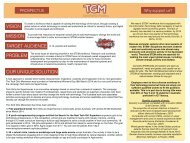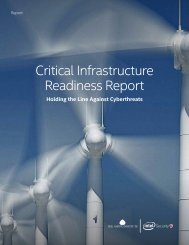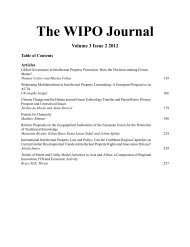Transparency Initiative (EITI)
2eoch1l
2eoch1l
You also want an ePaper? Increase the reach of your titles
YUMPU automatically turns print PDFs into web optimized ePapers that Google loves.
34 Generic Results Model<br />
Outcome: The following <strong>EITI</strong> results areas, that can be<br />
considered as key thematic domains of change, have been<br />
modeled in this study:<br />
1. Fiscal transparency,<br />
2. Public debate,<br />
3. Anti-corruption,<br />
4. Trade and investment climate.<br />
According to the logical framework approach, the four results<br />
areas at the outcome level (fiscal transparency, public<br />
debate, anti-corruption, trade and investment climate)<br />
would initiate separate results models for each outcome,<br />
but for the sake of simplicity they have been combined into<br />
a single generic results model.<br />
None of those outcomes will lead to impact in terms of<br />
sustainable development, if the accountability principle<br />
does not get on track. The design of the <strong>EITI</strong> is very<br />
much about strengthening government systems, and<br />
transparency is not an end in itself. The <strong>Initiative</strong> is geared<br />
towards improving accountability, and indicators are to<br />
be applied that reflect this. For example, it can be observed<br />
that there are reports (i.e. fiscal transparency), launching<br />
of reports (i.e. public debate), a policy and a commission<br />
to fight abuse of funds (i.e. anti-corruption) and more<br />
efficient licensing and company registration (i.e. trade<br />
and investment climate). All of which, to varying degrees,<br />
can even be found in <strong>EITI</strong> countries with autocratic<br />
regimes as publishing reports is a pre-condition of not<br />
being suspended or delisted. However, if there are not<br />
conditions which allow for a government or company to<br />
be held accountable, the <strong>Initiative</strong> has limited meaning for<br />
sustainable development. This is, of course, part of what<br />
national <strong>EITI</strong> processes are sought to articulate and resolve<br />
in terms of their theory of change, or in fulfillment of<br />
Requirement 7 (→ see Annex I).<br />
Output is modeled as one results area for all: stakeholders<br />
have greater capacity (in terms of expertise and means)<br />
to participate in informed and consensual decision making<br />
for public or corporate policy. Key <strong>EITI</strong> outputs:<br />
1. <strong>EITI</strong> Reports, produced annually and available on<br />
national <strong>EITI</strong> websites and on eiti.org.<br />
2. <strong>EITI</strong> Annual Activity Reports, which track progress<br />
against <strong>EITI</strong> Requirements, objectives and progress in<br />
following the recommendations of <strong>EITI</strong> Reports.<br />
3. <strong>EITI</strong> Validation Reports, evaluating country implemen-









